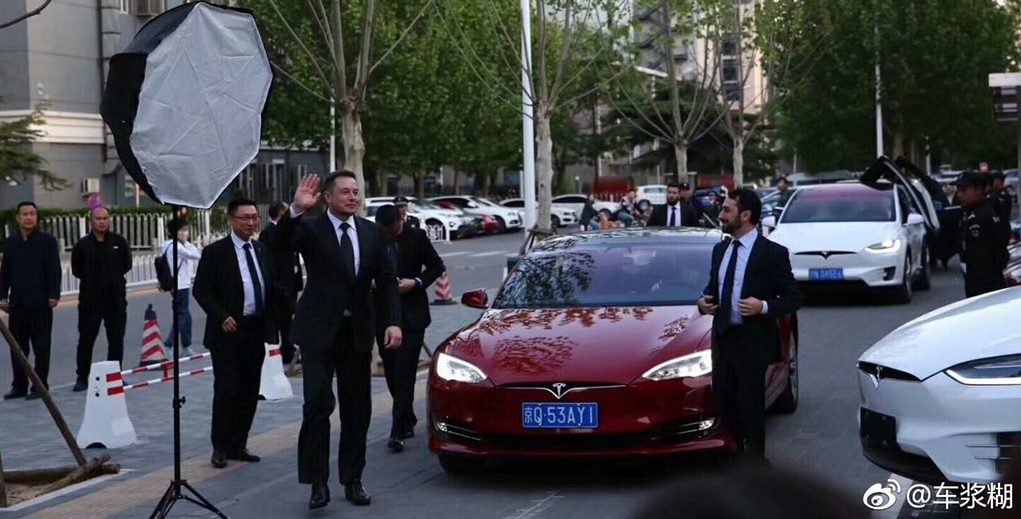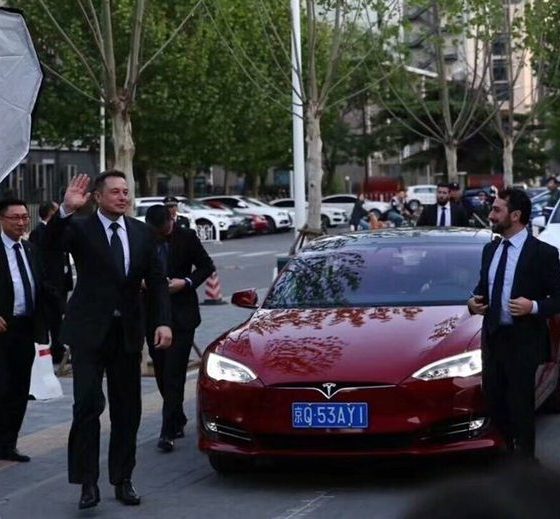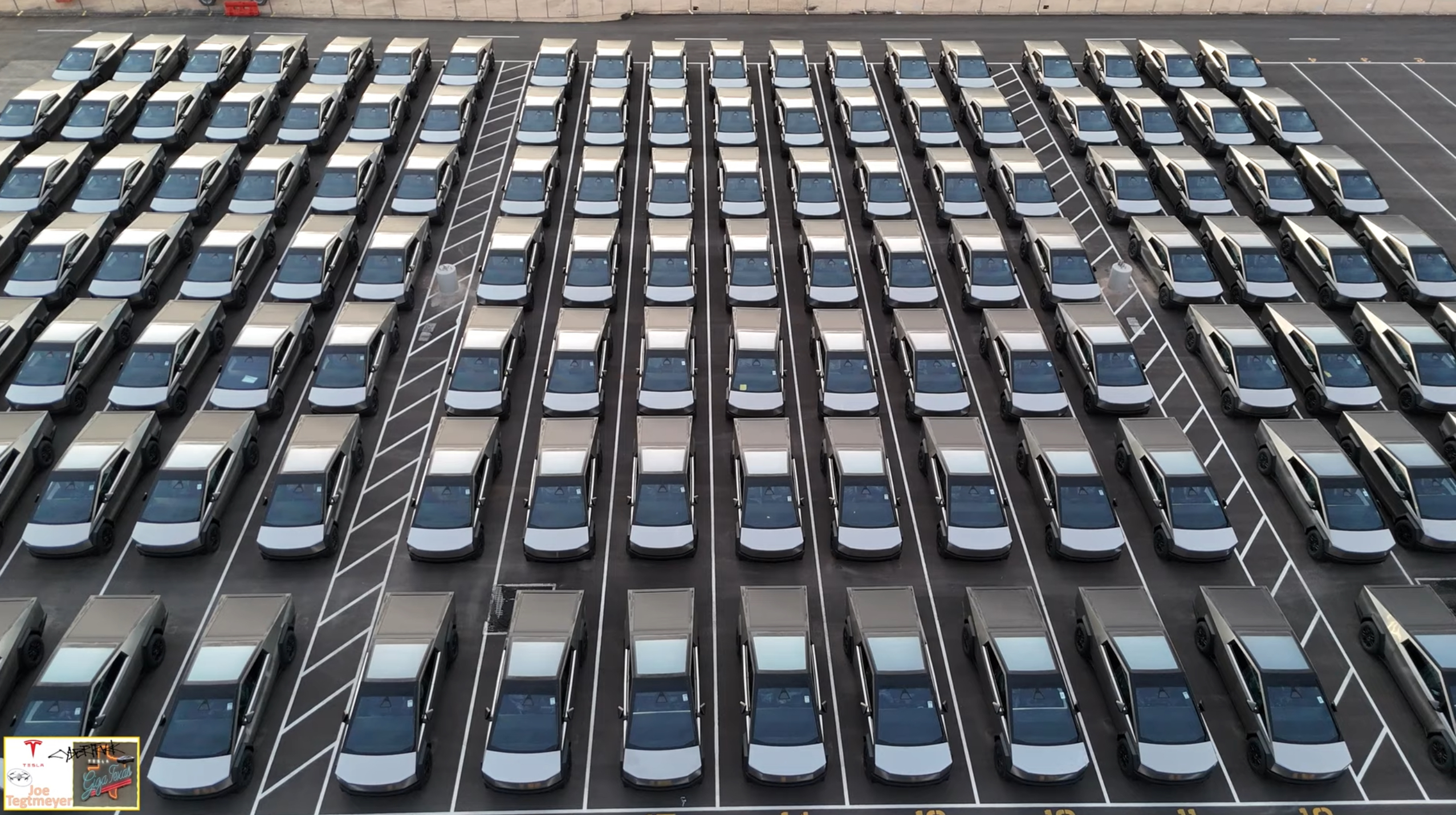

Investor's Corner
Tesla’s timeline for Gigafactory 3 in China is actually pretty conservative
Following reports that Tesla CEO Elon Musk has signed a preliminary agreement with Chinese authorities to build a solely-owned facility in Shanghai, questions have been raised by Wall St. skeptics and investors alike on how the California-based electric carmaker plans to fund development of its overseas factory.
Dubbed Gigafactory 3, the planned facility in China is expected to produce as many as 500,000 electric vehicles per year, doubling the production capacity of Tesla’s current facilities, and begin construction once permits and approvals are completed.
Tesla noted on Tuesday that vehicle production at Gigafactory 3 would start roughly two years after its construction begins, and ramp to a 500,000 vehicle per year production rate within 2-3 years. Such an aggressive timeline is classic Elon Musk, especially considering that components of Gigafactory 3, such as the advanced manufacturing robots and machinery that would be used to build the vehicles, would likely be coming from abroad. In a recent segment of Bloomberg Markets, Consumer Edge Research senior auto analyst James Albertine stated that the timeline of Gigafactory 3’s construction is simply “not feasible.”
While aiming to have its first electric cars roll off Gigafactory 3’s vehicle assembly lines within two years from construction is undoubtedly an ambitious goal, Tesla’s target dates are a lot more conservative than what critics would think. For one, Gigafactory 3 is being built in China, a country with a construction workforce that is optimized for quick, large-scale projects. This is something that Musk had mentioned back in February, when he noted that China’s progress in advanced infrastructure is “more than 100 times faster than the US.”
Musk’s statement on Twitter about China’s advanced infrastructure is reflected by feats of construction from the country’s workforce. Earlier this year, 1,500 workers in Eastern China set up a track replacement for a train station in just 8.5 hours. A time-lapse video of the event became viral, mainly due to the project having been conducted with near-surgical precision. Back in 2015, China also made headlines for its rapid construction after Broad Sustainable Building, a prefab construction firm in the Hunan province, managed to complete a 57-story skyscraper in just 19 days using a modular building method.
Also, if Tesla’s Nevada Gigafactory is any indication, the entire facility does not need to be completed before it can start its operations. Tesla started brush clearing and grading the land for Gigafactory 1 in the summer of 2014, and as of date, the expansive battery factory is still less than 30% complete. Despite this, the facility has already stepped up to provide enough battery packs to support the ongoing ramp for the Model 3, which recently managed to exceed a rate of 5,000 vehicles per week.
Drawing parallels to the sequence of events that have taken place at Tesla’s Nevada-based Gigafactory 1 over the years, reaching completion of several key sections in the China factory would be enough for the company to begin manufacturing of its vehicles without prior to full factory buildout. Considering the speed of China’s workforce, these key sections would likely be finished earlier than Tesla’s estimated two-year timeline.

Shanghai Municipal Party Committee Secretary Li Qiang meets with Elon Musk. [Credit: Weibo]
If there is one thing that could put a damper on the rapid development of Tesla’s China factory, it would be the funding needed for the ambitious project. Gigafactory 1 in Nevada, which produces battery packs, motors, and drivetrains, is estimated to cost around $5 billion when complete. Gigafactory 3, which incorporates both battery and vehicle production, would likely be in the same ballpark, if not more expensive.
With the state of Tesla’s finances today, the company has three main options to come up with the money to build Gigafactory 3. Tesla could go back to the equity market to fund the facility’s construction, just as it has done before. The company could also raise “debt” financing, however, its credit rating may have an impact on the company’s ability to negotiate favorable terms. One likely option that would allow Tesla to quickly fund the development of its factory in China is to partner with local investment banks. One of Tesla’s largest shareholders, China-based Tencent, already owns a 5% stake in the company.
There is also a fairly good chance that Tesla would receive major subsidies and tax relief from the Chinese government. The country, after all, is aggressively pushing electric cars as a preferred mode of transportation, with the country aiming to sell 2 million electric vehicles by 2020 and attain an ICE to EV ratio of 1:1 by 2030. With these own goals in mind, it does appear that it would be in China’s best interests to ensure that Tesla manages to build Gigafactory 3 without any difficulty. After all, the faster Tesla can start building its vehicles like the Model Y crossover SUV and some of the Model 3 in China, the better it would be for the country’s electric car market.

Investor's Corner
Tesla analyst realizes one big thing about the stock: deliveries are losing importance

Tesla analyst Dan Levy of Barclays realized one big thing about the stock moving into 2026: vehicle deliveries are losing importance.
As a new era of Tesla seems to be on the horizon, the concern about vehicle deliveries and annual growth seems to be fading, at least according to many investors.
Even CEO Elon Musk has implied at times that the automotive side, as a whole, will only make up a small percentage of Tesla’s total valuation, as Optimus and AI begin to shine with importance.
He said in April:
“The future of the company is fundamentally based on large-scale autonomous cars and large-scale and large volume, vast numbers of autonomous humanoid robots.”
Almost all of Tesla’s value long-term will be from AI & robots, both vehicle & humanoid
— Elon Musk (@elonmusk) September 11, 2023
Levy wrote in a note to investors that Tesla’s Q4 delivery figures “likely won’t matter for the stock.” Barclays said in the note that it expects deliveries to be “soft” for the quarter.
In years past, Tesla analysts, investors, and fans were focused on automotive growth.
Cars were truly the biggest thing the stock had to offer: Tesla was a growing automotive company with a lot of prowess in AI and software, but deliveries held the most impact, along with vehicle pricing. These types of things had huge impacts on the stock years ago.
In fact, several large swings occurred because of Tesla either beating or missing delivery estimates:
- January 3, 2022: +13.53%, record deliveries at the time
- January 3, 2023: -12.24%, missed deliveries
- July 2, 2024: +10.20%, beat delivery expectations
- October 3, 2022: -8.61%, sharp miss due to Shanghai factory shutdown
- July 2, 2020: +7.95%, topped low COVID-era expectations with sizeable beat on deliveries
It has become more apparent over the past few quarters that delivery estimates have significantly less focus from investors, who are instead looking for progress in AI, Optimus, Cybercab, and other projects.
These things are the future of the company, and although Tesla will always sell cars, the stock is more impacted by the software the vehicle is running, and not necessarily the vehicle itself.
Investor's Corner
SpaceX IPO is coming, CEO Elon Musk confirms
However, it appears Musk is ready for SpaceX to go public, as Ars Technica Senior Space Editor Eric Berger wrote an op-ed that indicated he thought SpaceX would go public soon. Musk replied, basically confirming it.

Elon Musk confirmed through a post on X that a SpaceX initial public offering (IPO) is on the way after hinting at it several times earlier this year.
It also comes one day after Bloomberg reported that SpaceX was aiming for a valuation of $1.5 trillion, adding that it wanted to raise $30 billion.
Musk has been transparent for most of the year that he wanted to try to figure out a way to get Tesla shareholders to invest in SpaceX, giving them access to the stock.
He has also recognized the issues of having a public stock, like litigation exposure, quarterly reporting pressures, and other inconveniences.
However, it appears Musk is ready for SpaceX to go public, as Ars Technica Senior Space Editor Eric Berger wrote an op-ed that indicated he thought SpaceX would go public soon.
Musk replied, basically confirming it:
As usual, Eric is accurate
— Elon Musk (@elonmusk) December 10, 2025
Berger believes the IPO would help support the need for $30 billion or more in capital needed to fund AI integration projects, such as space-based data centers and lunar satellite factories. Musk confirmed recently that SpaceX “will be doing” data centers in orbit.
AI appears to be a “key part” of SpaceX getting to Musk, Berger also wrote. When writing about whether or not Optimus is a viable project and product for the company, he says that none of that matters. Musk thinks it is, and that’s all that matters.
It seems like Musk has certainly mulled something this big for a very long time, and the idea of taking SpaceX public is not just likely; it is necessary for the company to get to Mars.
The details of when SpaceX will finally hit that public status are not known. Many of the reports that came out over the past few days indicate it would happen in 2026, so sooner rather than later.
But there are a lot of things on Musk’s plate early next year, especially with Cybercab production, the potential launch of Unsupervised Full Self-Driving, and the Roadster unveiling, all planned for Q1.
Investor's Corner
Tesla Full Self-Driving statistic impresses Wall Street firm: ‘Very close to unsupervised’
The data shows there was a significant jump in miles traveled between interventions as Tesla transitioned drivers to v14.1 back in October. The FSD Community Tracker saw a jump from 441 miles to over 9,200 miles, the most significant improvement in four years.

Tesla Full Self-Driving performance and statistics continue to impress everyone, from retail investors to Wall Street firms. However, one analyst believes Tesla’s driving suite is “very close” to achieving unsupervised self-driving.
On Tuesday, Piper Sandler analyst Alexander Potter said that Tesla’s recent launch of Full Self-Driving version 14 increased the number of miles traveled between interventions by a drastic margin, based on data compiled by a Full Self-Driving Community Tracker.
🚨 Piper Sandler reiterated its Overweight rating and $500 PT on Tesla $TSLA stock
Analyst Alexander Potter said FSD is near full autonomy and latest versions showed the largest improvement in disengagements, from 440 miles to 9,200 miles between critical interventions pic.twitter.com/u4WCLfZcA9
— TESLARATI (@Teslarati) December 9, 2025
The data shows there was a significant jump in miles traveled between interventions as Tesla transitioned drivers to v14.1 back in October. The FSD Community Tracker saw a jump from 441 miles to over 9,200 miles, the most significant improvement in four years.
Interestingly, there was a slight dip in the miles traveled between interventions with the release of v14.2. Piper Sandler said investor interest in FSD has increased.
Full Self-Driving has displayed several improvements with v14, including the introduction of Arrival Options that allow specific parking situations to be chosen by the driver prior to arriving at the destination. Owners can choose from Street Parking, Parking Garages, Parking Lots, Chargers, and Driveways.
Additionally, the overall improvements in performance from v13 have been evident through smoother operation, fewer mistakes during routine operation, and a more refined decision-making process.
Early versions of v14 exhibited stuttering and brake stabbing, but Tesla did a great job of confronting the issue and eliminating it altogether with the release of v14.2.
Tesla CEO Elon Musk also recently stated that the current v14.2 FSD suite is also less restrictive with drivers looking at their phones, which has caused some controversy within the community.
Although we tested it and found there were fewer nudges by the driver monitoring system to push eyes back to the road, we still would not recommend it due to laws and regulations.
Tesla Full Self-Driving v14.2.1 texting and driving: we tested it
With that being said, FSD is improving significantly with each larger rollout, and Musk believes the final piece of the puzzle will be unveiled with FSD v14.3, which could come later this year or early in 2026.
Piper Sandler reaffirmed its $500 price target on Tesla shares, as well as its ‘Overweight’ rating.








